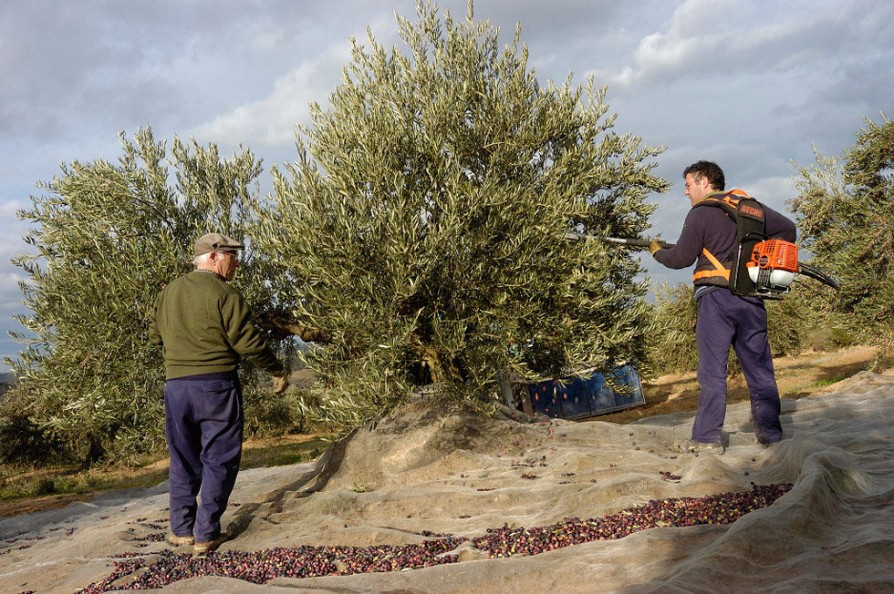Our Oil is good for the enviroment! Our Heritage  In the geographical Heart of Andalusia The production zone of our olives, protected by a “Denomination of Origin”, is perfectly delimited, since it corresponds with the real community of Priego de Córdoba. It is hidden in the South-west of the province of Cordoba, between the Sierra Subbética and the borders with the provinces of Granada and Jaén, at the heart of Andalusia, South of Spain and on the outer limits of mainland Europe. It is composed of the villages of Almedinilla, Carcabuey, Fuente Tojar y Priego de Córdoba, for a total surface of 44.818 hectares, of which 29.628 hectares are dedicated to olive groves.
Climate, Soil and Water Sources The climate, the rivers, streams and abundant natural water sources, have generated a permanent process of erosion and drawn numerous valleys and cut out deep depressions into the stunning landscape. There, a thick layer of fertile deposits and arable soil has formed, making it perfect for the culture of olive trees. Moreover, with more than 3000 hours of sun a year, timely autumn and spring rains, high temperature variations from winter to summer ( from 0ºC to 35ºC) and mild winds moderated by the presence of the mountains, are the environmental factors on which our olive trees thrive and which give us our proud Priego de Córdoba “Denomination of Origin”. The fact that olives are rich in oil is reflected in the botanical name of the olive tree-Olea europea- since the word "oleum" means oil in Latin. The origin of the Olive Culture is lost in Ancient Times, expanding with the civilisations which bloomed all around the Mediterranean. Excavations in our community have uncovered a wealth of surprising treasures dating back to the Iberian, Roman, Arabic and Jewish cultures which occupied the land in turn. Indeed, those ongoing archaeological digs reveal the millennial use of Olive oil, proving its power and benefits in food, general health and cosmetic products to this day. The numerous Ibero-Punic amphorae discovered in the Iberian village “Cerro de la Cruz” in Almedinilla already stored olive oil, so our traditions are well and truly steeped in History: the Roman invaders tamed the “acebuche” the local wild olive tree, and introduced their crop varieties to reinforce their native prosperity. They prepared their oil, adopting Iberian methods and found the nectar so delicious that Rome set a Trade Route, the Via Augusta”, to ship the oil in amphorae still found in the area but mostly in the Italian capital, exclusively from Andalusia. The remains of olive presses stand out of the Roman Period in “Cerro Lucerico”, in Fuente Tojar, already a true olive oil factory. Al-Ándalus created an important agricultural expansion, fruit of the urban expansion, improving techniques, the introduction of new species and the generalisation of the use of fertilisers. The Calif Omeya benefited thereafter greatly from all those advances.
The multicultural heritage of century-old knowledge allows us today, investigating and building on this ancient knowledge, to enjoy both quality and richness for our palates and our health.
Olive Variety : result of our Heritage The strongest varieties of Olive trees growing in and around our community are the “picudo”, the “hojiblanco” and the “ picual”, while the “carrasqueño”, “pajarero”, “manzanillo”, “cornachuelo” or “lechín” are little represented. Hojiblanco represents between 20% and 30% of the total number of olive trees: It has a narrow and rather short leaf and produces a rounded medium-sized olive. The olive oil yielded is fruity, with undertones of almonds and a tingling aftertaste.
Picual, produces between 25% and 35% of the olives, the easiest to pick up. Its leaf is also narrow and light green while the olive is smaller than The “Picuda” variety It is also known under the name of "marteño" or "nevadillo". Its oil contains an important fraction of saponin, which means that it doesn’t oxide, thus taking longer to become stale. A more bitter oil, it tastes simultaneously of wood and touches of fig: mills like to combine it with sweeter oils to widen the olfactory and gustative nuances while lengthening the tasting experience.
Picudo, is the most abundant variety, representing 50 to 60% of the total harvest. The tree is easily recognisable by its wide long and dark green leaves. Its larger elongated fruit has a pointed end, which gives it its name, as well as white dots on its green then purple skin: The olives yield a fresh fruity and more intense olive oil and as a result, this variety has received the greatest number of prizes and awards in Official Tasting sessions.
All in all, those varieties have reached us through our ancestors and their quality is more and more appreciated nowadays: The intense fruitiness of the “ picudo”, The almond undertones of the “hojiblanco”, the woody bitterness of the “picual” all contribute to making our rich sensuous Olive Oil with the Priego de Cordoba Denomination of origin.
Translate This Page
|
|||